The reason is simple and unavoidable: The older models lack the safety features required by DASMA (The Door and Access Manufacturer’s Association). Beginning in March 2000 two “entrapment protection devices” such as photoelectric sensors that reverse or stop when the light beam is interrupted, have been standard parts of a vehicular gate operating system. Before that, these advanced safety protections were not available. This industry standard is identified as UL325, and ADS Automatic Door Specialists adheres to the rules, as it does with all safety and consumer protection requirements.
A driveway gate may weigh over 200 pounds, depending on its length and the materials it is made of, and when set in motion by the operator motor can quickly generate enough force to injure a person or animal, or pin them against a post or wall. It of course can damage vehicles or other inanimate objects that may find their way into the gate’s path. The light beam (generally a thin laser beam) of these advanced photoelectric sensor systems will automatically reverse within two seconds of interruption, and targets three zones of highest risk:
- The leading end zone, where a closing gate abuts the encompassing wall or fence;
- The draw-in zones, where a gate in motion will pass a post or wall (generally near the operator);
- And the trailing end zone, where an opening gate will slide in parallel to the encompassing wall or fence.
When tripped by interruption, these light sensors will halt and generally reverse the motion of the sliding gate. If tripped a second time, the operator will shut down and require resetting. UL325 requires two entrapment protection devices in each entrapment zone.
Other features of the UL325 Standard: Battery backup during power outages and allowing the gate to be monitored or controlled via smartphone or computer. Since January 2016 an update requires the gate operator to monitor for the live connection of any external entrapment device.
If you’re wondering if you might just patch in repairs to your existing pre-2000 gate operator, the most reasonable answer is “No, don’t go there.” Most major manufacturers no longer provide replacement parts for these older models, and other sources (we know you can find almost anything on the internet) might be tempting but are not recommended. The cost of an up-to-date replacement is relatively low; adjusted for inflation, they are comparable to the initial pricing of the older units. Looking at the big picture, a new gate operator is a significant improvement over earlier versions, and it will be “smarter”, more efficient, and safer. If you are in doubt about the age of your unit, note that all gate operators will have a label indicating the manufacture date.
There are a lot of technical details we could bore you with here and are happy to review them with you if you have the interest, but, as with other purchases, it comes down to value, quality, and making the smart decision for the long term. If your older driveway gate operator needs repair, take the advice of the ADS Automatic Door Specialists pros…replace, don’t repair.

